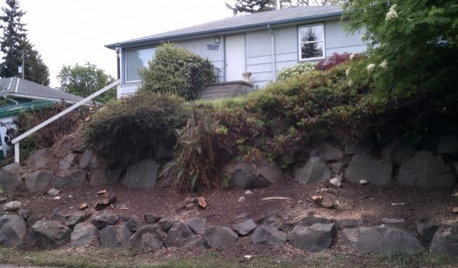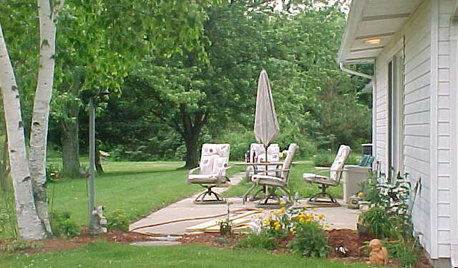Other questions on growing in 5-1-1 Mix
tryingtogrowagain
11 years ago
Related Stories


DOORS5 Questions to Ask Before Installing a Barn Door
Find out whether that barn door you love is the right solution for your space
Full Story
LIGHTING5 Questions to Ask for the Best Room Lighting
Get your overhead, task and accent lighting right for decorative beauty, less eyestrain and a focus exactly where you want
Full Story
Design Dilemmas: 5 Questions for Design Stars
Share Your Design Know-How on the Houzz Questions Board
Full Story
GARDENING GUIDESNo-Regret Plants: 5 Questions Smart Shoppers Ask
Quit wasting money and time at the garden center. This checklist will ensure that the plants you're eyeing will stick around in your yard
Full Story
Design Dilemmas: 5 Questions for Houzzers!
Post Ideas for Landscaping for a Modern Home, Updating a Rental and More
Full Story

FARM YOUR YARDHow to Grow Vegetables in Containers
Get glorious vegetables and fruits on your patio with a pro’s guidance — including his personal recipe for potting mix
Full Story
FALL GARDENING5 Fall Fruits You Can Grow in Containers
Brighten your porch or patio with a potted pomegranate, kumquat, blueberry bush or another great fall fruit
Full Story









tapla (mid-Michigan, USDA z5b-6a)
tryingtogrowagainOriginal Author
Related Professionals
Baltimore Landscape Architects & Landscape Designers · Hyattsville Landscape Architects & Landscape Designers · Paradise Landscape Architects & Landscape Designers · Springfield Landscape Contractors · Americus Landscape Contractors · Bellefontaine Neighbors Landscape Contractors · Gallatin Landscape Contractors · Mason Landscape Contractors · Middletown Landscape Contractors · Mount Kisco Landscape Contractors · Mount Sinai Landscape Contractors · Suitland Landscape Contractors · Tacoma Landscape Contractors · Tavares Landscape Contractors · Ridgefield Park Interior Designers & Decoratorstapla (mid-Michigan, USDA z5b-6a)
tryingtogrowagainOriginal Author
tapla (mid-Michigan, USDA z5b-6a)
greenman28 NorCal 7b/8a
tryingtogrowagainOriginal Author
tryingtogrowagainOriginal Author
tapla (mid-Michigan, USDA z5b-6a)
greenman28 NorCal 7b/8a
tryingtogrowagainOriginal Author